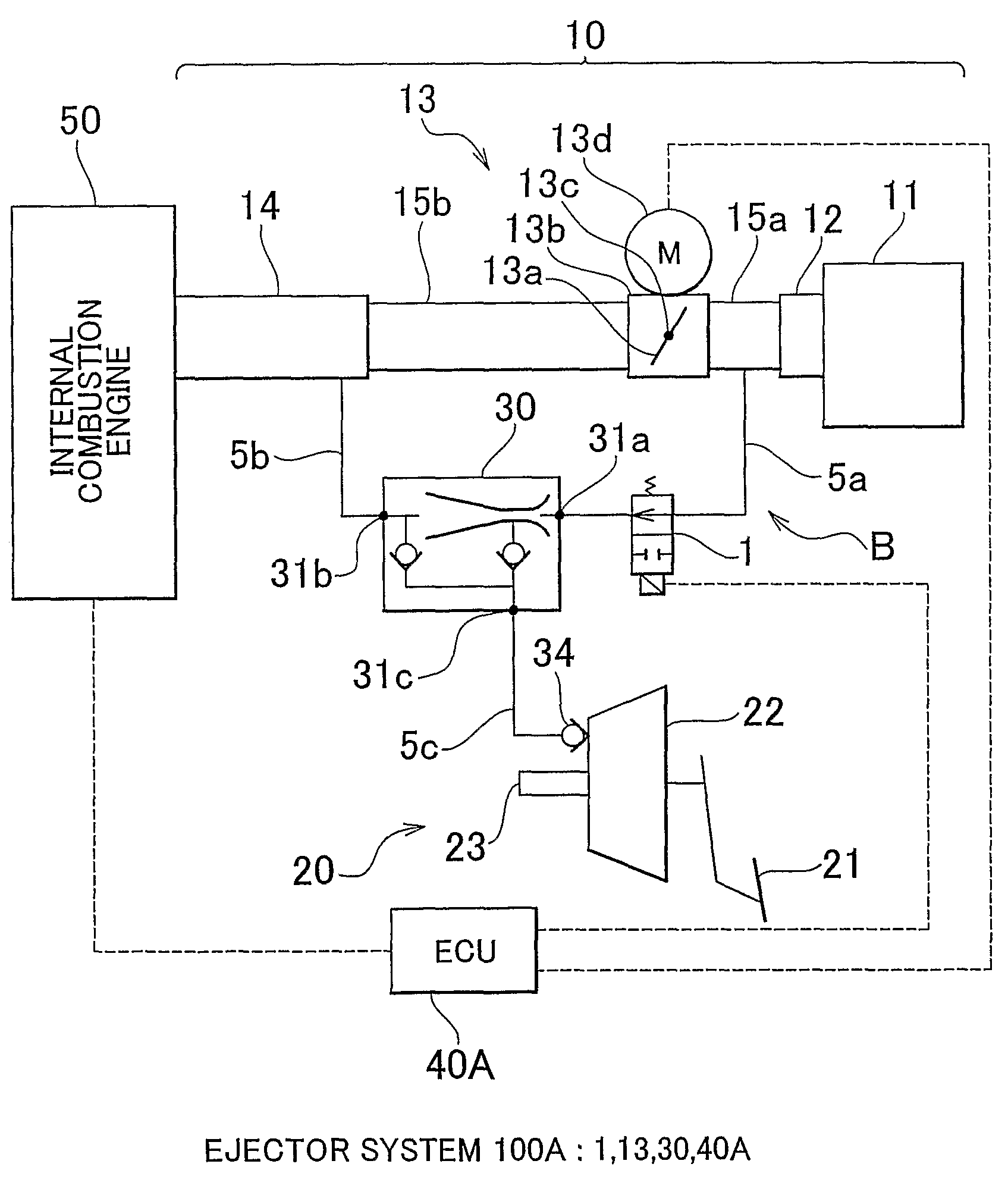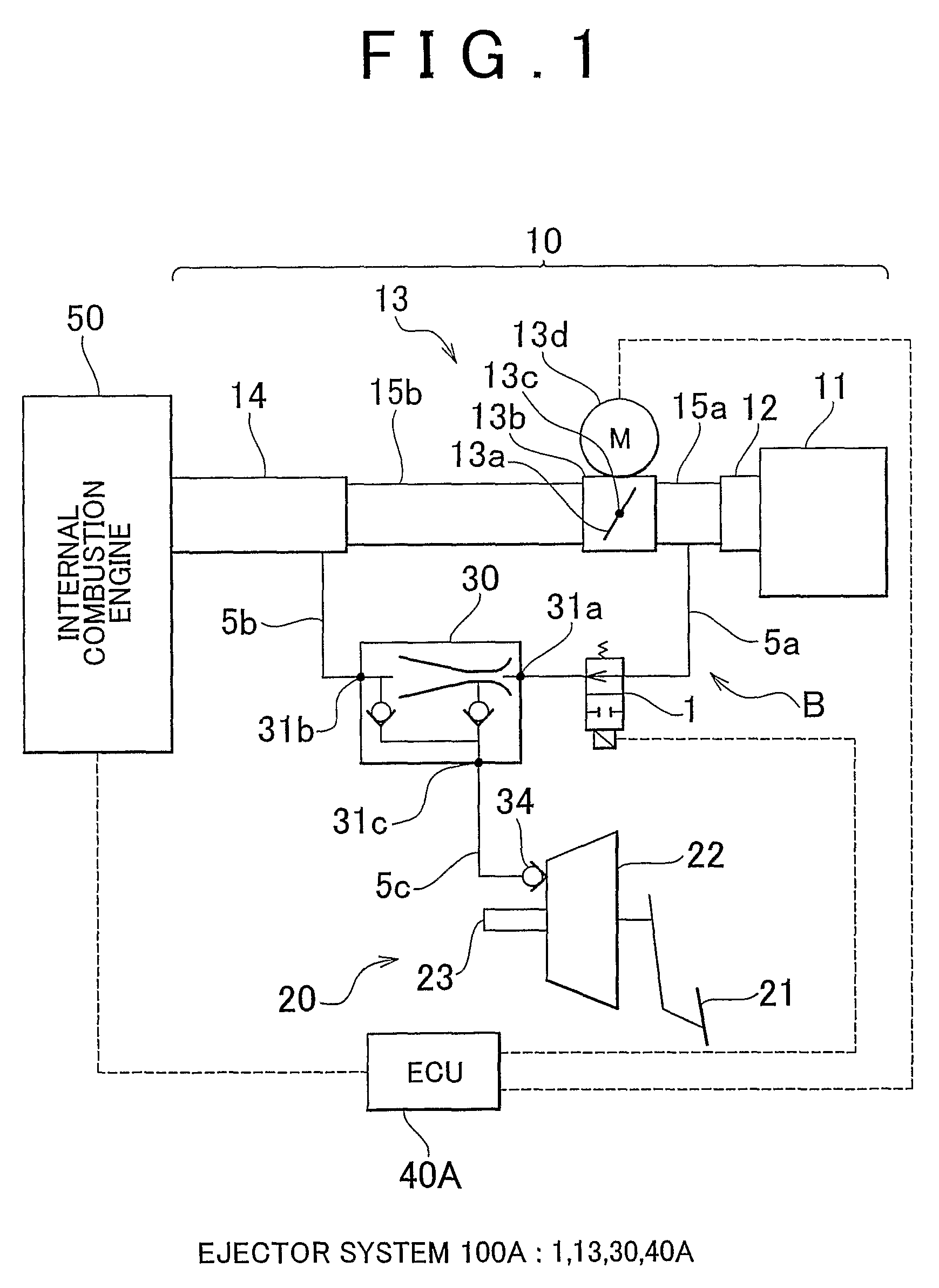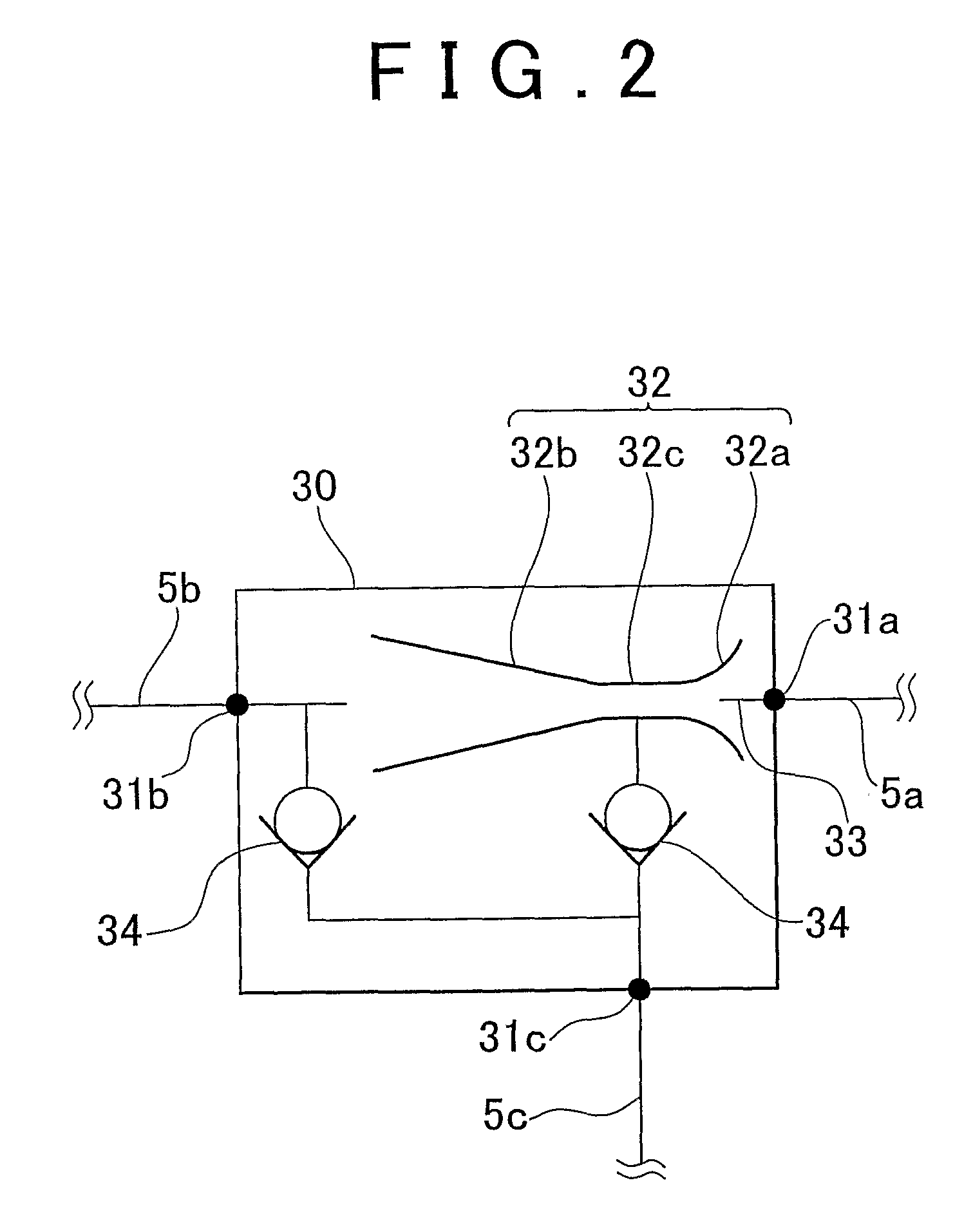Ejector system for a vehicle and ejector system controller
a technology of ejector system and ejector, which is applied in the direction of electrical control, process and machine control, etc., can solve the problems of affecting the air-fuel ratio, and the increase of the operating load placed on the vehicle operator, so as to prevent the blockage of the ejector and the adverse influence of the air-fuel ratio, the effect of minimal additional cos
- Summary
- Abstract
- Description
- Claims
- Application Information
AI Technical Summary
Benefits of technology
Problems solved by technology
Method used
Image
Examples
Embodiment Construction
[0023]FIG. 1 is a schematic view of an ejector system 100A for a vehicle (hereinafter referred to simply as an ejector system) according to a first embodiment of the present invention. The constitutional elements shown in FIG. 1, including an internal combustion engine 50, are mounted in a vehicle (not illustrated). The air intake system 10 of the internal combustion engine 50 has an air cleaner 11, an air flow meter 12, an electric throttle 13, an intake manifold 14, intake ports (not illustrated) that communicate with cylinders (not illustrated) of the internal combustion engine 50, and air intake pipes 15a, 15b, for example, which are appropriately provided between these elements. The air cleaner 11 is configured to filter intake air supplied to each cylinder of the internal combustion engine 50, and is connected via an air duct (not illustrated) to the atmosphere. The air flow meter 12 is configured to measure the amount of intake air flow, and outputs a signal according to the ...
PUM
 Login to View More
Login to View More Abstract
Description
Claims
Application Information
 Login to View More
Login to View More - R&D
- Intellectual Property
- Life Sciences
- Materials
- Tech Scout
- Unparalleled Data Quality
- Higher Quality Content
- 60% Fewer Hallucinations
Browse by: Latest US Patents, China's latest patents, Technical Efficacy Thesaurus, Application Domain, Technology Topic, Popular Technical Reports.
© 2025 PatSnap. All rights reserved.Legal|Privacy policy|Modern Slavery Act Transparency Statement|Sitemap|About US| Contact US: help@patsnap.com



